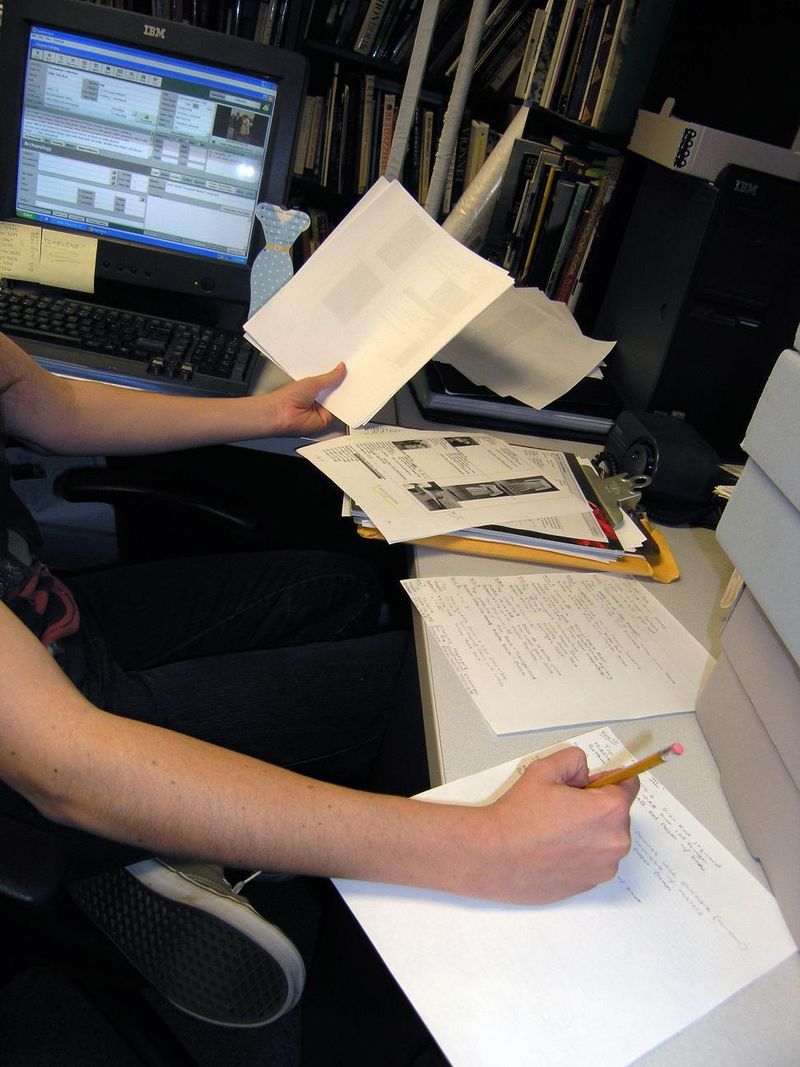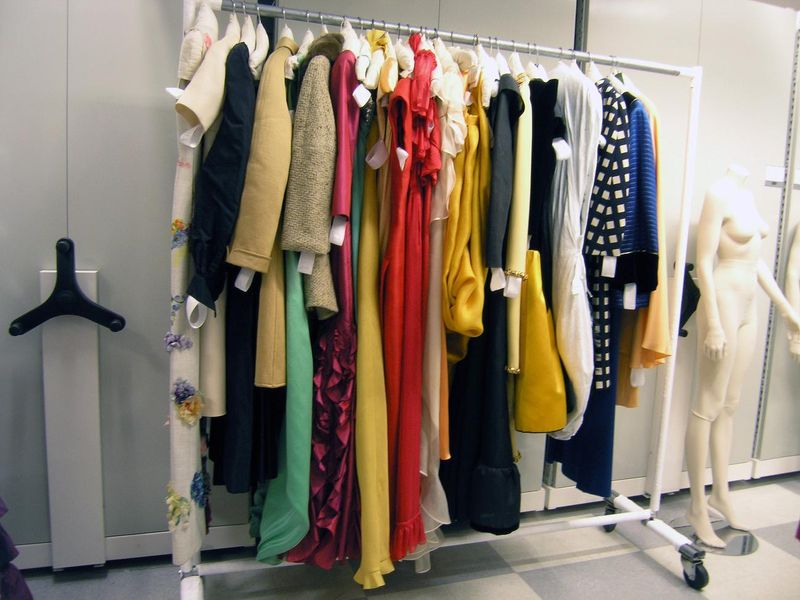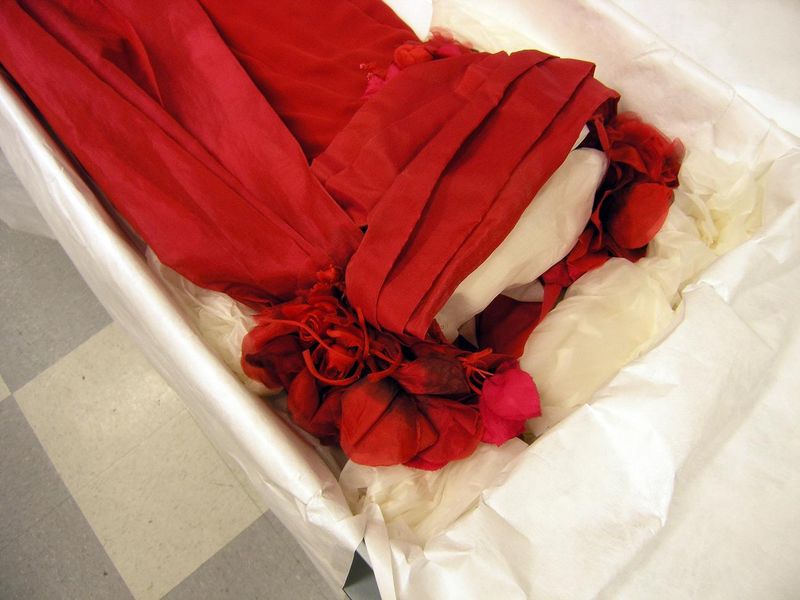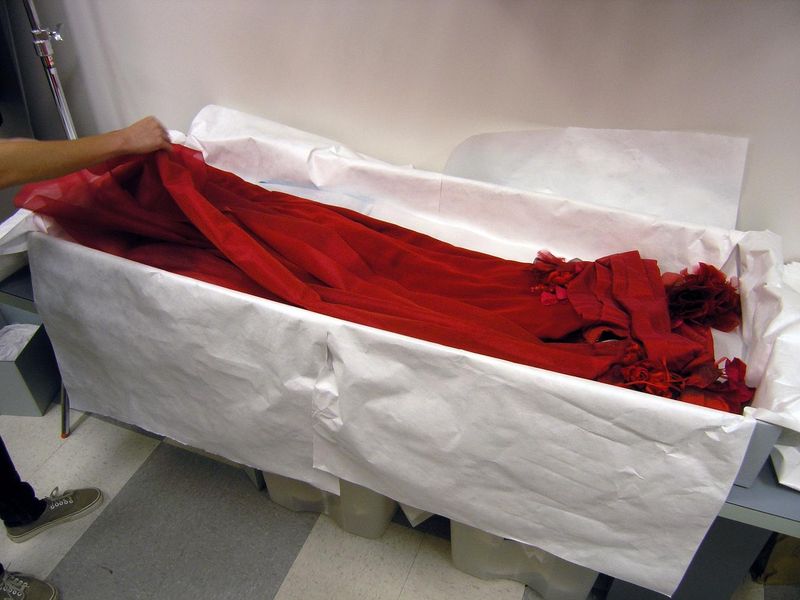Traveling in High Style
Have you ever wondered how a complete exhibition gets from one museum to another? In this post, FIDM Museum Registrar Meghan Grossman Hansen fills you in on the process.
This month, the FIDM Museum’s award-winning exhibition High Style: Betsy Bloomingdale and the Haute Couture is hitting the road. A slightly modified version of the exhibition will be installed at the American Textile History Museum in Lowell, MA from August 14, 2010-January 2, 2011. If you missed the exhibition in Los Angeles, this is your chance to learn about a style icon and the haute couture process.
As the FIDM Museum Registrar, I want to fill you in on the behind-the-scenes activities of traveling an exhibition. The shipping has to be planned in great detail, from the number of objects, the size of the crates, to the size of the truck. In our case, the total volume does not warrant an exclusive truck, so we are fortunate to tag along with other artworks on an art-transportation shuttle from Los Angeles to the east coast. (Yes, there are trucks filled entirely with art objects criss-crossing the country!) Next, a packing list is planned with a number of considerations in mind: dimensions, weight, condition, and object accessibility (for instance, the order in which objects will be installed may be an important factor in where they are packed).
 Assistant Registrar Dani Killam creates the packing list.
Assistant Registrar Dani Killam creates the packing list.
The objects are organized according to the packing list, making it easier to access them as the packing moves forward. Note that all hanging garments are supported by padded hangers. Some of the pieces are not seen here because they must be stored in boxes, to avoid stretching or damage to fragile areas.
 Haute couture gowns ready for packing
Haute couture gowns ready for packing
The collections staff packs the boxes according to the packing list. The garments are packed in archival blue-board boxes with a layer of Tyvek to protect against moisture. Each object is laid in the box with archival, non-buffered abaca tissue arranged to support folds and protect delicate details. We note each object’s condition as it is packed, information which will be shared with the staff at the ATHM.
The boxes shown here are slightly wider than our usual garment boxes, providing generous “shoulder room” for the garments. As a result, they are able to lie flat, which is often difficult for voluminous full-length dresses like the dress pictured below. Reducing folds has the immediate advantage of reducing the amount of wrinkles produced during shipping and storage, but it also extends the life of the garment. Each fold in a historic textile will cause the fibers to become weaker and sometimes break down altogether, causing shattering or tears in the fabric. This consideration is part of a larger approach in museum standards called preventative conservation, which involves appropriate long-term storage, minimal object handling, and proper environmental controls for the objects. For other preservation measures, the FIDM Museum staff consults with a professional textile conservator.
Notes are made for particularly fragile objects, for example the red silk flowers on this evening dress by Gianfranco Ferré for Christian Dior (2006.116.13). The flowers are supported all around with lightweight abaca tissue. These notes will allow our counterparts at the ATHM to pack the pieces in the exact same way for their return trip.
 The small puffs of abaca tissue support the three-dimensional flowers and bodice.To see this same gown on a floating form, click here.
The small puffs of abaca tissue support the three-dimensional flowers and bodice.To see this same gown on a floating form, click here.
Please stick around for more tidbits about our traveling exhibition!
